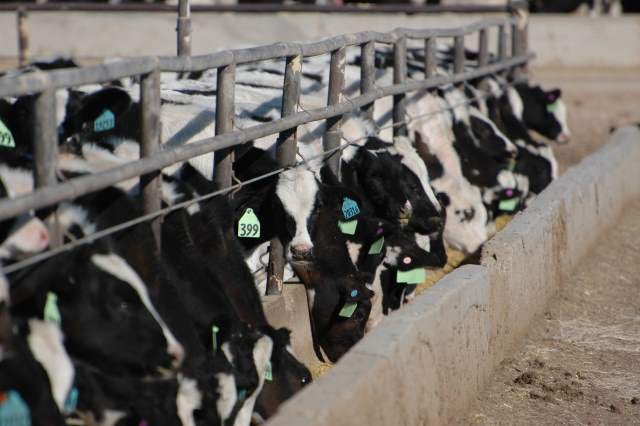The black and white on black-and-white cattle
January 27, 2015

“One fact is axiomatic in the beef and meat industry—it is in a constant state of change.”
That sentiment could well have been spoken this morning. In fact, it is likely that somewhere, it was. But that quote was made 35 years ago, by Norval Dvorak with Packerland Packing Company in Green Bay, Wis., in the August, 1979 issue of Meat Processing magazine.
“Change is generated by both interior and exterior forces and influences,” Dvorak went on to say. “General economic conditions , levels of disposable income, food faddism, health scares, alternative meat supplies, available supplies, feed price levels, weather-generated shortages, consumer eating habits—all serve to influence the demand/supply/price relationships, with a resultant impact upon the slaughter/processing/merchandising structure of the industry.”
Dvorak hit the nail on the head, as the old cliché goes. But this look back to 1979 illustrates another cliché as well—the more things change, the more they stay the same.
The title of Dvorak’s article, which came from a presentation he gave at the 1979 Reciprocal Meat Conference, was “Should cattle be specially bred and fed for lean beef?” Ed Czerwien, USDA Market News reporter and author of the weekly boxed-beef video you see on beefmagazine.com, gave me a copy of the article. “You might be interested in this,” he said.
I don’t know if Dvoark’s thoughts generated as much conversation about ground beef as did Rabo’s Don Close when he released his now-famous report a year ago. That report, if you’ll recall, suggested the beef industry should move to a two-tiered production system. The first tier would identify and produce cattle for the upper two-thirds Choice and Prime market, while the second would generate cattle better suited genetically for the lean beef trade.
It appears to me that the beef business is already moving in that direction. In fact, it could be argued that we’ve been headed that way for at least 35 years.
Take, for instance, this observation: “However, if we take another look at tonnage and percentages, it is quite apparent that much of today’s manufacturing meat is coming from the boneless chucks of our fed cattle,” Dvorak said. “Illustratively, we have standing orders from HRI chains for the boneless fronts of our Holstein Choice and no-roll cattle that, at an 80-85% lean, go into the production of very high-quality hamburger.”
Sound familiar? For a while now, the end cuts—chucks and rounds—have driven fed carcass values every bit as much as the middle meats, which traditionally are the value drivers. That’s a notable feat given that one of the many profound lessons learned in 2014 is that demand for high-quality steaks—upper two-thirds Choice and better—is very robust.
Is it possible that we already have that two-tiered market? That some consumers will pay for the quality they demand while others will pay for the value and convenience of ground beef? I think it is.
And I think we already have the genetics to fulfill both. Clearly, Angus has dominated the quality market, but what about the hamburger segment?
Again, Dvorak’s words are prophetic. “There are certain breeds that fit specific niches in the supply/demand structure. In Wisconsin, we find the Holstein is such an animal. Fortunately, in the genetic selection for milk production, the same characteristics of roughage utilization, feed convertibility, scale and muscling have also fit well into their utilization as primal cuts or for processing meats.”
Sound familiar? Holstein steers are now a significant part of our fed cattle mix. In fact, those magpies—so-called for their black-and-white resemblance to that ubiquitous bird of the crow family—may well have kept more than a few feedyards in business as the industry seeks to find a new equilibrium in its infrastructure. Add the beef breeds that are genetically more predisposed to produce a leaner carcass and it’s clear that the genetics are already in place for the fed cattle segment to continue supplementing the ground beef trade.
In his report, Close estimated that around 60% of the beef consumed in this country is eaten as ground beef. That’s a huge market; one we cannot ignore. In 2014, the strength of beef demand surprised even the most bullish among us, driven by strong preference by some consumers for the very best that the beef business can produce. That’s a huge market; one we cannot ignore.
And we don’t have to. Clearly, hamburger demand can’t be completely met with fed cattle alone. So as we rebuild numbers, we’ll see cow slaughter continue to run lower. That means imports, both of cattle from our neighbors to the north and south, and of beef trimmings from our overseas trading partners, will be critical in 2015 and beyond.
But the trend is clear. We have a two-tiered beef demand in the U.S. And we have the genetics and the ability to fulfill both.
You might also like:
How Schiefelbein Farms made room on the ranch for nine sons
100 biggest seedstock producers in the U.S.
Bale grazing lets cows feed themselves
4 tips for managing cold stress in cattle this winter
Breathtaking photos of winter on the ranch
8 tips for being a better ranch manager in 2015
You May Also Like


.png?width=300&auto=webp&quality=80&disable=upscale)
